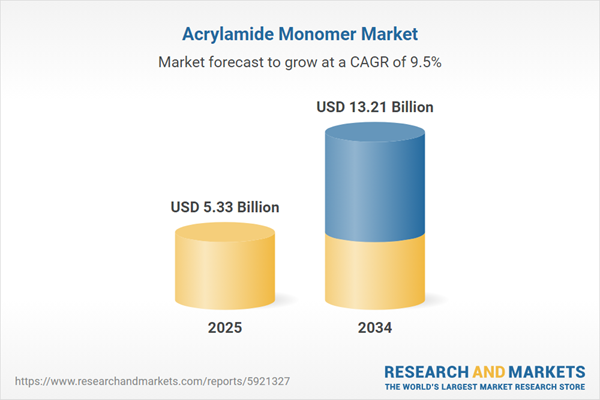Heightened Demand in the Pulp/Paper Industry to Augment the Market Growth of Acrylamide Monomer
Acrylamide monomer is used as a precursor of polyacrylamide, which is used as a paper strengthening agent. The growing demand for paper in the packaging industry is supporting the growth of the market. Furthermore, the growing demand for polyacrylamide in enhanced crude oil recovery applications is anticipated to supplement the market growth in the forecast period. This can be attributed to the growing demand for crude oil-based products across industry verticals such as gasoline, petrochemical feedstocks, diesel, jet fuel, waxes, lubricating oils, and others. The adoption of enhanced oil recovery process is expected to surge as the process can help recover more oil from the reservoir.The Asia-Pacific Leads the Global Market for Acrylamide Monomer
The Asia-Pacific is the leading producer of acrylamide monomer and accounts for the largest share of global output of the product. The Asia-Pacific region is followed by Europe, North America, Africa, and the Middle East as the other major producers of the material. Germany, the United Kingdom and France are the leading importers of acrylamide monomer globally. China is the leading exporter of the product, followed by Germany, the Netherlands, and the United States.Acrylamide is used as a flocculent for sewage and wastewater treatment. The growing investment by the governments in the development of wastewater treatment plants to tackle the issues of water wastage across industries is aiding the market growth in the Asia-Pacific, in terms of consumption. In addition, the region is witnessing expansive investments in infrastructure development activities. In this regard, the growing use of acrylamide in the production of paint and coating additives is anticipated to support the market growth in the forecast period.
Market Segmentation
Acrylamide monomer, also known as acrylic amide, is a colourless and odourless chemical. It is highly soluble in water, acetone, and alcohol, and is produced by the hydration of acrylonitrile. It is stable at room temperature and polymerises at its melting point. The thermal decomposition of the monomer of acrylamide expels carbon monoxide, carbon dioxide, and nitrogen oxides.By end use, the market is divided into:
- Waste and Wastewater Treatment
- Petroleum (Mostly Drilling Fluid)
- Pulp/Paper
- Mining
- Coating
- Printing/Dyeing
- Others
By region, the market is divided into:
- North America
- Europe
- Asia-Pacific
- Latin America
- Middle East and Africa
Rising Demand for Acrylamide Monomers Across Industry Verticals to Augment the Market Growth
The increasing use of acrylamide monomers in the end-use sectors, such as gel electrophoresis, ore processing, tertiary oil refining, and the dyes and plastics synthesis, is stimulating the demand for the product. One of the key drivers of the market is the use of acrylamide monomer in polyacrylamide synthesis, which is further used in wastewater treatment operations. As the developed countries concentrate on the use of polyacrylamide in wastewater treatment, with the imposition of stringent environmental regulations, the market is expected to witness a considerable growth in the coming years. The compound is also being used in shale gas refineries as a friction reducer. It is also used as a co-monomer in super-absorbent polymers and for multiple agricultural purposes, especially irrigation. The rising demand from these industries is anticipated to provide an impetus to the market. Furthermore, the rising demand for acrylamide as an intermediate in the production of organic chemicals is expected to support the market growth in the coming years.Key Players in the Global Acrylamide Monomer Industry
The report gives a detailed analysis of the following key players in the global acrylamide monomer market, covering their competitive landscape, capacity, and latest developments like mergers, acquisitions, and investments, expansions of capacity, and plant turnarounds:- BASF SE
- Mitsui Chemicals, Inc.
- Ashland
- Others
Table of Contents
Companies Mentioned
The key companies featured in this Acrylamide Monomer market report include:- BASF SE
- Mitsui Chemicals, Inc.
- Ashland
Table Information
| Report Attribute | Details |
|---|---|
| No. of Pages | 158 |
| Published | August 2025 |
| Forecast Period | 2025 - 2034 |
| Estimated Market Value ( USD | $ 5.33 Billion |
| Forecasted Market Value ( USD | $ 13.21 Billion |
| Compound Annual Growth Rate | 9.5% |
| Regions Covered | Global |
| No. of Companies Mentioned | 4 |









